A MOSFET transistor is commonly used in electronic circuits. It is a fundamental building block for modern electronics due to its ability to amplify or switch electrical signals and power. The MOSFET accounts for 99.9% of all transistors in the world. It was invented by Mohamed Atalla and Dawon Kahng at Bell Labs in 1959 [1].
Compared to the vacuum tube, MOSFETs are generally smaller and require less power to operate. MOSFETs revolutionized the field of electronics and paved the way for smaller and cheaper radios, calculators, computers, and other electronic devices.
This article will focus on the role of a gate resistor in MOSFETs, which is a crucial component used to ensure proper functioning and protect the MOSFET from damage due to high current and voltage spikes.
What Is MOSFET?
To ensure the proper functioning of the MOSFET, a gate resistor is often used. A gate resistor is a small-value resistor placed between the MOSFET gate and the driver output. It limits the instantaneous current flow into the MOSFET gate, which helps protect the MOSFET from damage due to high current and voltage spikes.
Gate resistors are commonly used in MOSFET driver circuits in applications like motor control, power supplies, and switching regulators. The value of the gate resistor is typically chosen based on the MOSFET’s gate capacitance and the desired switching frequency. A gate resistor with too high of a value can cause slower switching speeds, resulting in more power loss and lower efficiency. Conversely, using a gate resistor with too low of a value can cause excessive current and voltage spikes, leading to MOSFET failure [2].
Using a proper gate resistor can also help improve the MOSFET’s switching behavior by reducing ringing and oscillations at the MOSFET gate. Ringing can occur due to parasitic inductances and capacitances in the MOSFET circuit, leading to high-frequency oscillations that can interfere with the MOSFET’s performance.
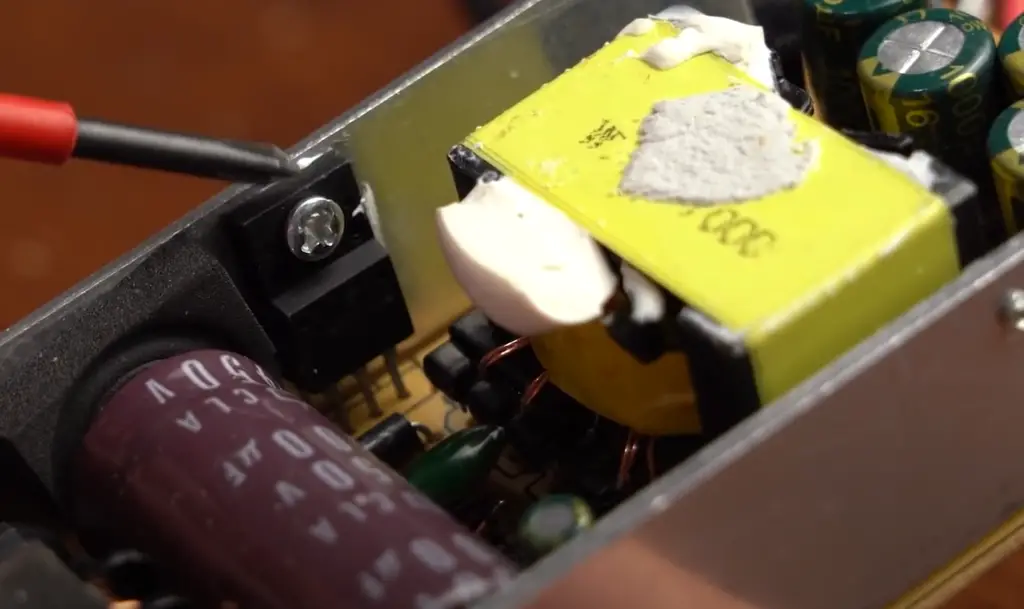
Modes Of MOSFET:
Depletion Mode
In depletion mode MOSFET, the channel is always “ON” by default under zero gate bias voltage, and applying a voltage to the gate will reduce its conductivity. Depletion mode MOSFETs have a higher ON resistance and are mainly used in special applications like voltage clamps, current regulators, and amplifiers.
Enhancement Mode
An enhancement mode MOSFET, on the other hand, is off by default under zero gate voltage and requires an input voltage on the gate to conduct. Enhancement mode MOSFETs are used extensively in digital circuits to create an ON/OFF digital switch or as a driver for power MOSFETs in power electronics applications.
Enhancement mode MOSFETs are the preferred choice in most electronic circuits since they have a better performance compared to depletion mode MOSFETs.
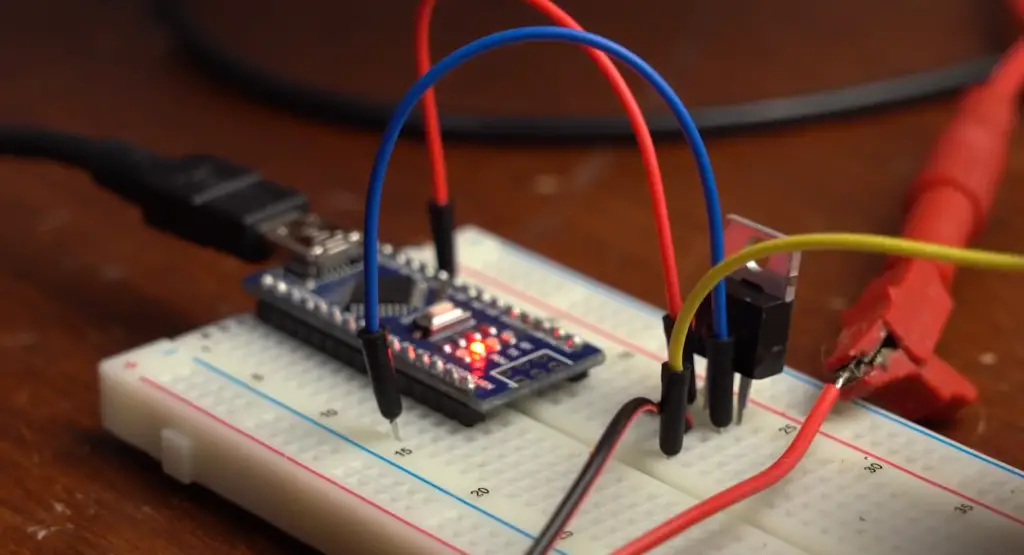
Working Principle of MOSFET:
P-Channel MOSFET
In P-Channel MOSFETs, there are two heavily doped P-type layers on either side of a lightly doped N-type layer. The N-type layer serves as the channel between the P-type layers. When a positive voltage is applied to the gate relative to the source, the layer beneath the oxide layer is depleted of holes or the region of negative charge carriers located just underneath the oxide layer becomes larger.
This creates a pinch-off region in the channel, reducing the cross-sectional area of the channel and increasing its electrical resistance. As a result, the current can no longer flow freely between the source and drain, switching off the MOSFET.
N-Channel MOSFET
In N-Channel MOSFETs, there are two heavily doped N-type layers on either side of a lightly doped P-type layer. The P-type layer serves as the channel between the N-type layers. When a positive voltage is applied to the gate relative to the source, the layer beneath the oxide layer is depleted of electrons or the region of positive charge carriers located just underneath the oxide layer becomes larger. This creates a pinch-off region in the channel, reducing the cross-sectional area of the channel and increasing its electrical resistance. As a result, the current can no longer flow freely between the source and drain, switching off the MOSFET [3].
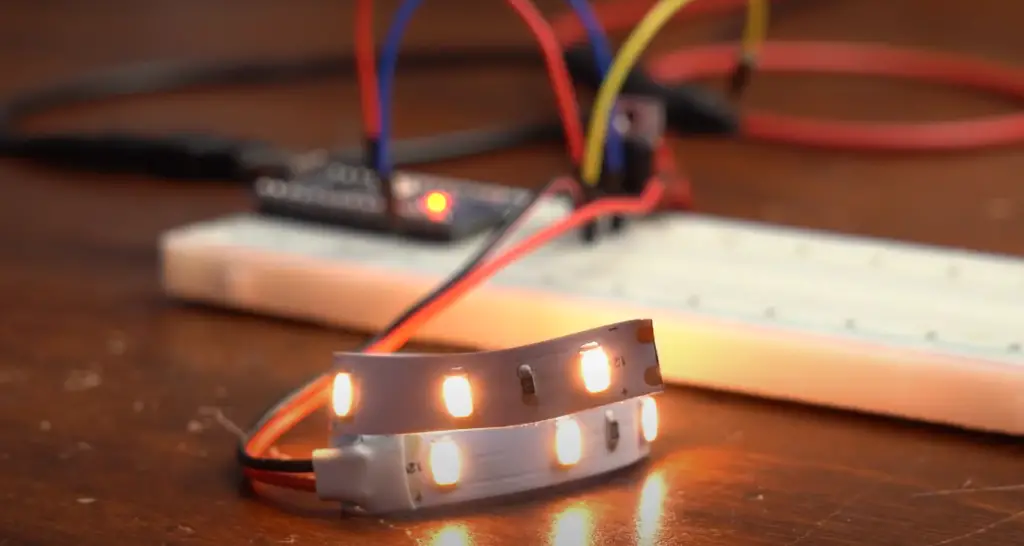
MOSFET Regions of Operation
MOSFETs have three regions of operation: cutoff region, triode region, and saturation region.
In the cutoff region, the MOSFET does not conduct current between the source and drain, as the gate-source voltage is below the threshold voltage of the MOSFET. In the triode region, the MOSFET behaves like a voltage-controlled resistor, as the gate-source voltage is high enough to create a conductive channel between the source and drain. The drain current follows an approximately linear relationship with the gate voltage and drain-source voltage in this region.
In the saturation region, the MOSFET is fully turned on, and its drain current becomes nearly independent of the gate voltage as the voltage across the channel is almost constant. In this region, the MOSFET behaves like a voltage-controlled current source. MOSFETs are most commonly used in the saturation region for digital applications, such as switching on and off in power electronics and amplification in analog circuits.
It is essential to select the appropriate MOSFET operating region for any given application because each region has a unique effect on the MOSFET’s performance. For example, in a switching application, the MOSFET should be operated in the cutoff and saturation regions to minimize power loss, while in an amplifier application, it should be operated in the triode region to achieve a high voltage gain.
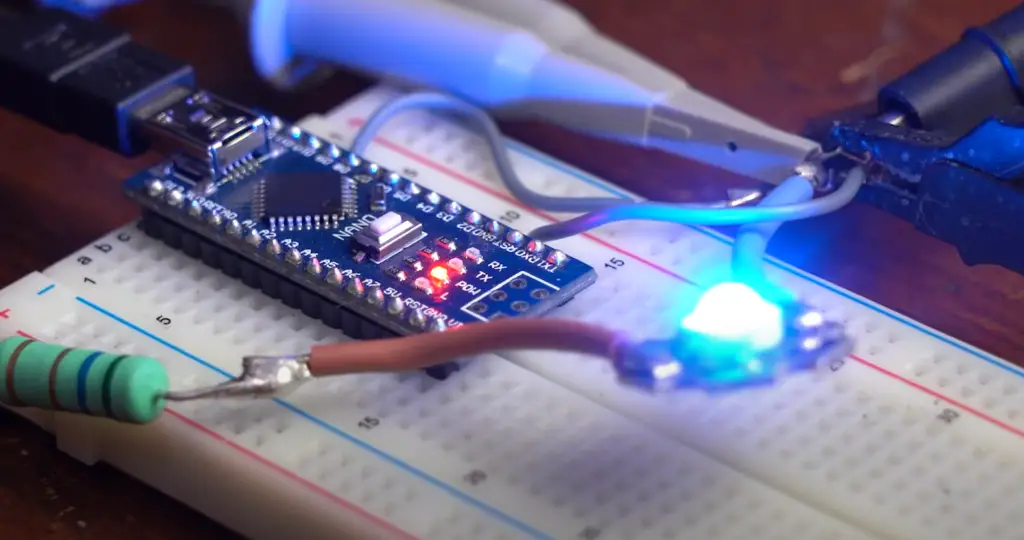
Example of MOSFET as a Switch
MOSFETs are commonly used as switches in electronic circuits due to their ability to control the flow of current with a very low input signal. An example of using a MOSFET as a switch is to control an LED using a microcontroller. In this setup, we can use an enhancement-mode N-channel MOSFET as a switch.
To implement this system, the LED is connected to a DC power source, and one end of the LED is connected to the drain terminal of the MOSFET. The source terminal of the MOSFET is connected to the ground, and the gate terminal of the MOSFET is connected to the output of the microcontroller. When the microcontroller’s output is high, it provides a positive voltage to the gate terminal of the MOSFET, which creates a conductive channel between the source and drain of the MOSFET, allowing current to flow through the LED, and the LED lights up.
On the other hand, when the microcontroller’s output is low, there is a low voltage applied to the gate terminal of the MOSFET. Therefore, there is no conductive channel, and the MOSFET acts like an open switch, turning off the LED. MOSFETs can switch on and off extremely fast, making them ideal for applications that require high-speed switching.
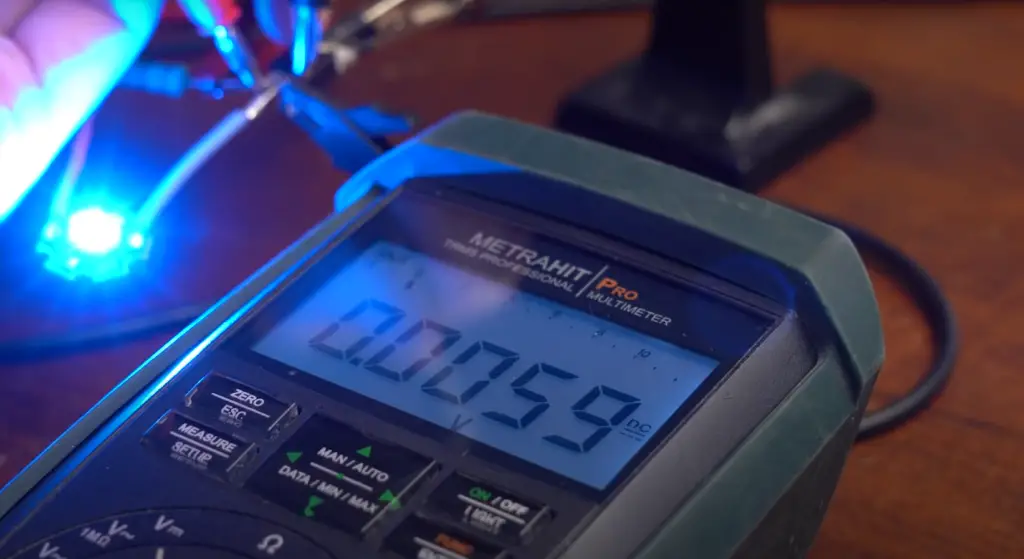
Application of MOSFET as a Switch
MOSFETs are widely used as switches in electronic circuits because of their fast switching speed, precise control, and low power loss. MOSFETs can be used as switches in various electronic applications, including power supplies, motor drivers, amplifiers, and many more.
One of the common applications of MOSFETs as a switch is in power supplies. MOSFETs can switch high voltages and currents at a fast pace, efficiently converting power from one voltage level to another. In motor control applications, MOSFETs are used to regulate the current flow, turning the motor on or off, or changing the direction of its rotation.
In audio amplifiers, MOSFETs are used as switches to turn the audio signal on and off, controlling the volume flow through the output transistors. Other uses of MOSFETs as switches include battery switching, voltage regulators, and voltage clamping circuits.
What Is A MOSFET Gate Resistor?
In high-speed switching applications, without a gate resistor, the sudden surge of current can cause a ringing effect that can degrade the MOSFET performance, lead to potential electromagnetic interference (EMI) issues, and even cause damage to the MOSFET.
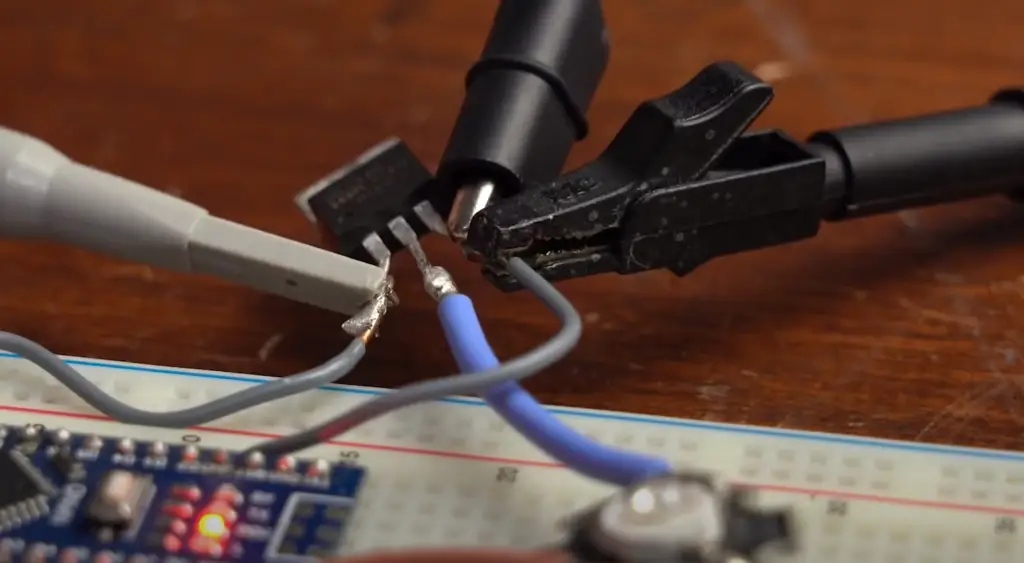
The gate resistor also helps to prevent overshoot and improve the noise immunity of the circuit. The gate resistor value is chosen based on the MOSFET gate capacitance and the switching frequency. The general rule of thumb is to choose a resistor value that is large enough to limit the surge current but small enough to maintain a fast switching speed.
Why Do You Need a Gate Resistor?
The main reason why you need a gate resistor in a MOSFET circuit is to limit the current that flows into the gate of the MOSFET during switching operations. If there is no gate resistor, a sudden surge of current can cause a ringing effect that can degrade the MOSFET performance, cause electromagnetic interference (EMI) issues, and potentially damage the MOSFET.
The gate resistor also helps prevent overshoot and improves the noise immunity of the circuit. The value of the gate resistor depends on the MOSFET gate capacitance, the switching frequency, and the desired performance level. Generally, the gate resistor should be chosen to be large enough to limit the surge current, but still small enough to maintain a fast switching speed [4].
MOSFET Gate Resistor Placement
MOSFET gate resistor placement is an important factor to consider in MOSFET circuits. The gate resistor should be placed as close as possible to the gate terminal to minimize any parasitic inductance and resistance that can cause unwanted ringing and overshoot during switching operations.
In addition, the gate resistor should also be placed in series with the gate terminal to limit the current that flows into the gate during switching, as discussed in the previous answers. The gate resistor value should be chosen based on the MOSFET gate capacitance and the switching frequency in order to optimize the circuit’s performance and reliability during high-speed switching operations.
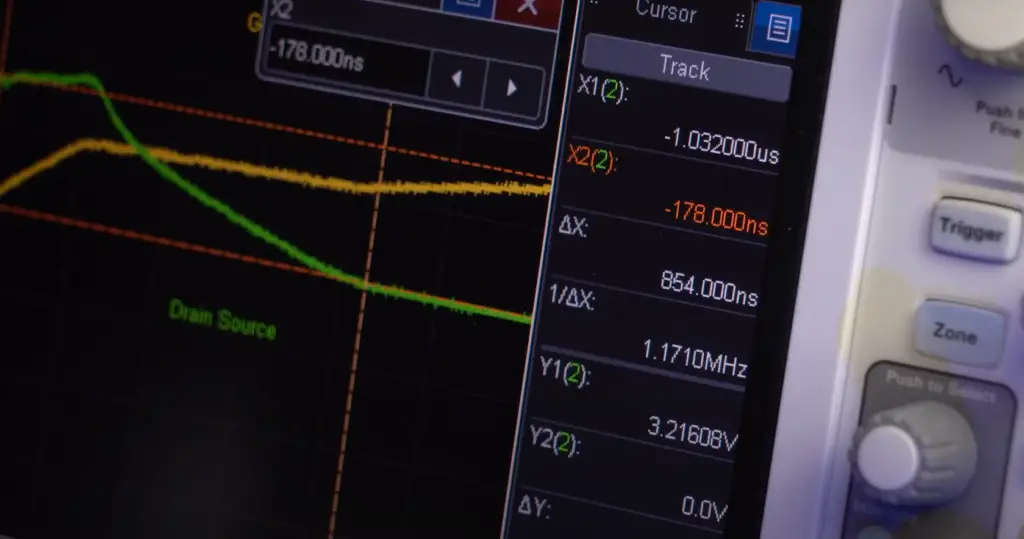
MOSFET Misconceptions:
You Don’t Need Resistors On The Gate
One of the most common misconceptions about MOSFETs is that you do not need resistors on the gate. While MOSFETs do not require a base current like bipolar junction transistors (BJTs), resistors are still necessary on the gate to protect the MOSFET from overcurrent during switching operations.
When a MOSFET is switched on, it can create a surge of current into the gate terminal, which can damage the device or produce unwanted switching noise in the circuit. A gate resistor is used to limit the current that flows into the gate of the MOSFET and prevent problems from arising.
A proper gate resistor value can optimize the MOSFET’s switching operation without compromising the performance and reliability of the circuit. The gate resistor value depends on the MOSFET’s gate capacitance, switching frequency, and desired performance level.
VGS Is The Threshold To Turn On A MOSFET
Another misconception about MOSFETs is that VGS, or Gate-to-Source voltage, is the threshold to turn on the device. VGS is not the threshold voltage but rather the voltage required to establish the channel from source to drain. The threshold voltage is a key parameter of MOSFETs that is indicated in datasheets.
The threshold voltage (VT) is the minimum gate-to-source voltage required to induce a channel between the source and drain regions. MOSFETs can be used in both enhancement mode (normally off) and depletion mode (normally on) depending on the threshold voltage.
The minimum voltage required to turn on a MOSFET is the sum of the threshold voltage and a voltage drop across the gate-source voltage (VGS), which is typically in the range of a few volts.
MOSFETs Are Variable Resistors
MOSFETs are sometimes mistakenly thought of as variable resistors. However, MOSFETs operate in either the cut-off, triode, or saturation region.
In the cut-off region, the MOSFET acts as an open switch, meaning that no current can flow from the source to the drain. Similarly, in the saturation region, the MOSFET is essentially acting as a closed switch, allowing full current flow from the source to the drain.

It is in the triode region that the resistance of the MOSFET varies with the voltage applied to the gate. In the triode region, the MOSFET acts as a variable resistor, with the resistance changing as the gate voltage changes.
It is important to note that using MOSFETs as variable resistors is not the intended use of the device and can lead to further design issues [5].
Design a MOSFET To Use The Saturation Region
A common misconception when designing circuits with MOSFETs is that the device should operate in the saturation region for optimal performance. While it is true that the saturation region has the lowest RDS(on), or the resistance between the source and drain when the MOSFET is fully on, it may not always be the best operating point.
In certain applications, such as switching power supplies, operating the MOSFET in the triode region may actually result in better overall performance. Thus, the designer should consider the specific application and requirements to determine the optimal operating point for the MOSFET.
P-Channel MOSFETs Require A Negative Voltage Source
Another common misconception is that p-channel MOSFETs require a negative voltage source to operate. This is not the case, as p-channel MOSFETs are designed to work with positive voltages.
However, p-channel MOSFETs are commonly used in circuits that have a negative power supply, such as in automotive or audio applications. In these cases, the gate voltage of the p-channel MOSFET needs to be negative relative to the source, which can be achieved using a level-shifting circuit.
All MOSFETs Are Static Sensitive
MOSFETs are sensitive to electrostatic discharge (ESD), which can cause damage to the device. However, not all MOSFETs are equally susceptible to ESD damage. Manufacturers use various techniques, such as adding protective coatings or designing the device with better isolation, to improve ESD tolerance.
It is important to take appropriate measures to prevent MOSFET damage due to ESD, such as using anti-static devices, wearing anti-static wristbands, and storing MOSFETs in anti-static packaging.
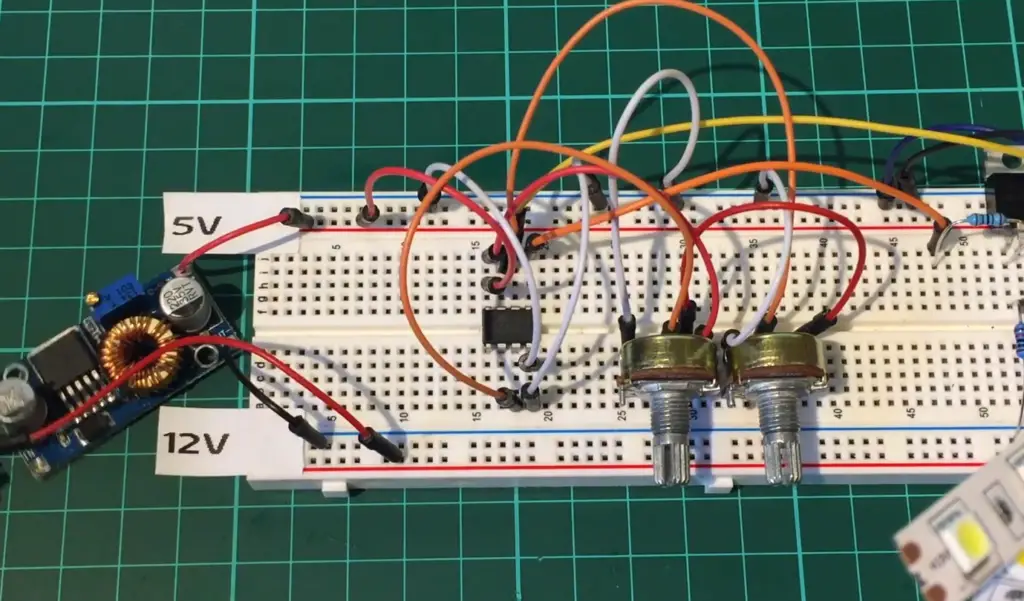
MOSFETs Are Better Than BJTs
Lastly, it is a common misconception that MOSFETs are universally better than bipolar junction transistors (BJTs) for all applications. While MOSFETs do have many advantages over BJTs, such as faster switching times and higher input impedance, there are still many cases where BJTs are the preferred device.
For example, BJTs are generally better suited for applications where a wide range of current gain is required, or where the output voltage needs to be saturated. MOSFETs, on the other hand, are generally better suited for applications where high voltage or high power handling is required.
FAQ
1. Why have a resistor on the gate of a MOSFET?
A resistor is often placed on the gate of a MOSFET (Metal-Oxide-Semiconductor Field-Effect Transistor) for several reasons. One primary purpose is to prevent excessive current flow when the MOSFET is being turned on or off. MOSFETs have a capacitive input, meaning they can draw a large surge of current when the gate voltage changes rapidly. Placing a resistor in series with the gate, it limits the current flow, preventing damage to the MOSFET and other components in the circuit.
2. What is the effect of a gate resistor in MOSFET?
The gate resistor in a MOSFET influences the switching characteristics of the transistor. It helps in controlling the rise and fall times of the gate voltage, reducing the possibility of voltage spikes or ringing due to high-frequency noise. The gate resistor also helps dampen any parasitic oscillations or instability that may occur in the circuit. By adding resistance to the gate, it improves the overall stability and performance of the MOSFET.
3. What is MOSFET resistance?
MOSFET resistance refers to the resistance exhibited by the MOSFET channel when it is operating in its linear region, also known as the “on-state” resistance or “RDS (on)”. It represents the resistance of the MOSFET when it is conducting current between the drain and source terminals. The lower the RDS(on) value, the more efficient the MOSFET is at conducting current without significant voltage drop [6].
4. Does a MOSFET act as a resistor?
In its on-state, a MOSFET can be considered a variable resistor. When the MOSFET is fully enhanced (turned on), it exhibits a low resistance between the drain and source terminals, allowing a relatively large current to flow. However, in its off-state, the MOSFET acts as an open circuit, effectively blocking current flow.
5. Do MOSFETs need a gate resistor?
The use of a gate resistor in a MOSFET circuit is not always necessary but is often recommended for optimal performance and protection of the device. The need for a gate resistor depends on the specific application, switching frequency, and desired characteristics. In high-speed switching circuits or when dealing with inductive loads, a gate resistor can help mitigate ringing, reduce electromagnetic interference (EMI), and prevent voltage spikes.
6. What is the purpose of a terminal resistor?
It is not clear what you mean by a “terminal resistor”. If you are referring to a resistor placed at the terminal of a device, it could serve various purposes depending on the context. In general, resistors are used to control current flow, voltage levels, or impedance matching in electronic circuits. They can limit current, provide voltage division, and protect sensitive components.
7. Does a MOSFET need a gate driver?
In most cases, a MOSFET (Metal-Oxide-Semiconductor Field-Effect Transistor) requires a gate driver to ensure efficient and effective switching. The gate driver is a specialized circuit that provides the necessary voltage and current levels to fully turn on or off the MOSFET.
MOSFETs have a high input impedance, which means they require a small amount of current to control the gate voltage. However, they also have a relatively large input capacitance, which means they require a significant current surge during switching to charge or discharge the gate capacitance quickly.
A gate driver is designed to deliver the required current and voltage levels to the MOSFET’s gate in a controlled and efficient manner. It typically incorporates level shifting and voltage regulation to ensure that the gate voltage reaches the appropriate levels for proper operation.
8. What resistor should I use for a MOSFET?
The choice of resistor for a MOSFET depends on the specific application and the desired operation of the transistor.
Two common types of resistors used in conjunction with a MOSFET are gate resistors and pull-down resistors:
- Gate resistors: These resistors are connected between the gate and the driving circuitry to control the rate of voltage change at the gate and prevent ringing or oscillations. The value of the gate resistor is typically chosen based on the desired switching speed and the capacitance of the MOSFET’s gate. Values in the range of 10 to 100 ohms are often used, but the exact value may vary depending on the specific MOSFET and the application requirements
- Pull-down resistors: These resistors are used to ensure that the gate of the MOSFET remains at a defined voltage level when the driving circuit is not actively driving it. Pull-down resistors are connected between the gate and the ground (or a reference voltage) and help prevent the MOSFET from floating or turning on unintentionally. The value of the pull-down resistor depends on the leakage current of the MOSFET and the desired threshold for defining a logic low voltage. Common values for pull-down resistors range from several kilohms to tens of kilohms [7];
9. Are MOSFETs active or passive?
MOSFETs (Metal-Oxide-Semiconductor Field-Effect Transistors) are considered active devices. Active devices are electronic components that require an external power source to operate and actively control the flow of current through them. MOSFETs are designed to amplify or switch electronic signals by controlling the current flow between the source and drain terminals using a voltage applied to the gate terminal.
Unlike passive components such as resistors, capacitors, or inductors, which do not require external power and have no amplification or switching capabilities on their own, MOSFETs actively modulate and control the flow of current through them based on the voltage applied to the gate.
10. What is MOSFET resistance between the drain and gate?
MOSFETs have a very high resistance between the drain and gate terminals. This is due to the MOSFET’s structure, which involves a thin oxide layer that acts as an insulator between the gate and the channel. This insulating layer creates a high impedance between the gate and the channel, which can be controlled to modulate the flow of current through the MOSFET.
11. Why does MOSFET have high resistance?
MOSFETs have a high resistance due to the thin oxide layer between the gate and the channel. This oxide layer creates a high impedance that can be controlled to modulate the flow of current through the MOSFET. The high resistance also helps ensure that there is minimal current flow into the gate, which can help prevent damage to the MOSFET.
12. What is a MOSFET current limiting resistor?
This resistor is typically used to protect the MOSFET from damage due to high current and voltage spikes.
13. Does MOSFET resistance increase with temperature?
Yes, the resistance of a MOSFET generally increases with temperature due to the increase in thermal energy that can cause more scattering of charge carriers. This increase in resistance can cause the MOSFET to dissipate more power and generate more heat, which can further increase the temperature.
14. Why does the MOSFET burn in the inverter?
A MOSFET may burn in an inverter when it is subjected to excessive current and voltage spikes due to poor design or operation. This can cause the MOSFET to heat up and eventually fail due to the high power dissipation. To prevent this, proper design and operation, including the use of gate resistors and current limiting resistors, can help ensure that the MOSFET operates within its safe limits.
15. Is MOSFET voltage or current?
A MOSFET is a voltage-controlled device. Its operation is based on the voltage applied to its gate terminal, which controls the flow of current between its source and drain terminals.
16. Is MOSFET used in AC or DC?
MOSFETs are used in both AC and DC circuits. They are commonly used in power electronics applications, including inverters, motor control, and switching regulators.
17. Can we use a MOSFET as a capacitor?
No, a MOSFET cannot be used as a capacitor. The capacitance between the gate and source of a MOSFET is very small and typically considered negligible in most applications. Capacitors and MOSFETs are different types of components that serve different functions in electronic circuits.
18. Can MOSFETs increase the voltage?
MOSFETs cannot inherently increase voltage. However, they can be used in voltage boost and buck converter circuits to increase or decrease voltage levels by regulating the flow of current through them. These circuits typically involve using multiple MOSFETs in a switching configuration to achieve the desired voltage transformation.
19. Do MOSFETs need cooling?
MOSFETs generate heat during operation due to their internal resistance and the power dissipated across them. In high-power applications, MOSFETs may need cooling to prevent them from overheating and failing. Cooling options include heat sinks, fans, and liquid cooling systems.
20. What does a 10k ohm resistor look like?
A 10k ohm resistor typically has a brown-black-orange-gold or brown-black-orange-silver color band sequence. This is the standard color coding for 5% tolerance resistors. The physical appearance of the resistor may vary depending on its size and power rating.
21. Is RS-485 5V or 12v?
RS-485 is a communication standard that defines the electrical characteristics of the communication link. It does not specify a voltage level. RS-485 can operate with various voltage levels, including 5V and 12V, depending on the specific implementation.
22. Is RS-485 AC or DC?
RS-485 is a communication standard for data transmission over a serial communication link. It is not specific to AC or DC and can be used with either depending on the application.
23. Is RS-485 3.3 V or 5V?
RS-485 can operate at various voltage levels, including 3.3V and 5V, depending on the implementation. The voltage level is typically specified by the device manufacturer or application requirements.
24. What temperature does a MOSFET fail?
MOSFETs have a maximum operating junction temperature specified by the manufacturer. If the MOSFET exceeds this temperature, it can fail or degrade in performance. The maximum temperature typically ranges from 125°C to 175°C, depending on the specific device.
25. Do resistors limit current or voltage?
Resistors are used to limit the flow of current in a circuit, which in turn can affect the voltage across the resistor. The voltage drop across a resistor is proportional to the current flowing through it and the value of the resistor itself, according to Ohm’s law.
26. Which is faster – the transistor or MOSFET?
MOSFETs are generally faster than transistors due to their lower gate capacitance and ability to switch on and off more quickly. However, the performance of both devices can vary depending on the specific application and the chosen device.
27. Why use a MOSFET instead of a switch?
MOSFETs offer several advantages over traditional mechanical switches, including faster switching speeds, higher efficiency, lower losses, and miniaturization. They are also quieter, more reliable, and can be controlled electronically.
28. Can IGBT replace MOSFET?
While IGBTs can handle high voltage and current, they have higher switching losses and are not as fast as MOSFETs. Whether an IGBT can replace a MOSFET in a particular application depends on the specific requirements of the application and the performance characteristics of both devices.
Useful Video: Here is why MOSFET drivers are sometimes essential! || MOSFET Driver Part 1 (Driver, Bootstrapping)
References
- https://www.build-electronic-circuits.com/mosfet-gate-resistor/
- https://www.build-electronic-circuits.com/mosfet-gate-resistor/
- https://toshiba.semicon-storage.com/ap-en/semiconductor/knowledge/faq/mosfet/how-does-the-series-gate-resistor-affect-the-mosfet.html
- https://www.baldengineer.com/7-mosfet-myths-and-misconceptions-addressed.html
- https://www.vishay.com/docs/73217/an608a.pdf
- https://www.electro-tech-online.com/threads/does-a-mosfet-need-a-gate-resistor.87419/
- https://www.elprocus.com/mosfet-as-a-switch-circuit-diagram-free-circuits/













Leave a Reply